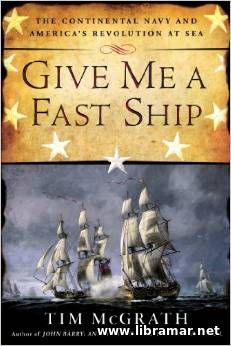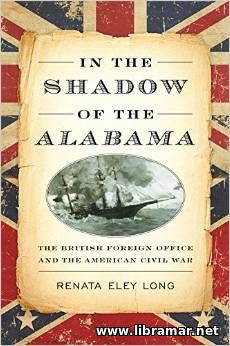 The present volume was worked out and released with the ultimate intention of its authors to conduct a thorough exploration of the maritime-related mechanics of the Empire, making an attempt to demonstrate how exactly the different aspects of this enterprise have been made to "work".
The chapters of the book showing that the emergence and works of the professional hydrographic services in the Navy and the ways both commercial and political imperatives assisted in driving the maritime surveying, have been considered central to that. The British Admiralty did support the exploration as well as the investigation of geographical expeditions undertaken by such famous characters of the past as Captain Cook and Charles Darwin.
In fact, we may say that the maritime expeditions of the Captain Cook's "Endeavour" and Darwin's "Beagle" were partly concerned with the interest of the Empire. And that was one of the reason why the "Manual of Scientific Enquiry" was developed and published by the British Admiralty to be of help for the naval officers.
One of the aims of this volume was to examined the marine technologies made the great studies in the XIX century. In the beginning of the nineteenth century, most of the vessels crossing the Atlantic were wooden, having a displacement of just a few hundred tons, relying on the sails and winds, and having no contact with the land...
 Here is an excellent re-print of the John Pryor's book which brings together an imposing mass of data related to the shipping in Mediterranean Sea of the medieval times. This study will be found very useful for all people seriously interested in the early modern history of that area. The book focuses on oceanographic and meteorological conditions in the Mediterranean, it shows all limitations faced by the oar and sailing vessels over a thousand years ago and explains how those limitations impacted on naval warfare and piracy and influenced sea trade and travel.
The content of the book is very easy-to-read and well-written bringing together a huge amount of useful information relating to the maritime shipping in the medieval Mediterranean sea. The publication contains the results of the very serious study conducted with the intention to fill in the existing information gaps and provide interested people with a complete panorama. This book presents a very powerful example of how useful it can be to make careful studies of both geographical and technical influences.
The publication considers the relevant technological limitations of the shipping traffic in conjunction with the specific geographical conditions within which vessels were operating and description of how those conditions led to establishing of the important sea lanes of safe and effective shipping.
 If, as Winston Churchill famously remarked, Admiral John Jellicoe was the only and unique person who could have lost the Great War in an afternoon, then by extension Admiral Reinhard Scheer was the man who could have achieved victory in so few hours. Reinhard Scheer, the longest serving of the four wartime commanders of Imperial Germany's High Sea Fleet, was one of the most influential wartime German naval officers.
His thirty-two months commanding the fleet covered some of the critically important events not only of the sea war, but also the entire conflict - the Battle of Jutland or Skagerrakschlacht, and the Germanese resumption of the unrestricted submarine warfare which was instrumental in bringing in America on the side of the Entente powers. In August 1918 Scheer was promoted to Chef des Admiralstabs (Chief of the Naval Staff) after the incumbent. Admiral Hennine von Holtzendorff. tendered his resignation to the Kaiser in late July owing to ill-health. He remained in this position until the end of the war, before resigning from his post on 14 November, and retiring from the navy on 17 December. Born in 1863, Scheer joined the Imperial Navy as a cadet in 1879 and his career path followed the usual combination of RMS Lusitania caused a serious diplomatic crisis with the US in May 1915.
In January 1916 von Pohl was taken ill and relieved of his command. He would die of liver cancer before the end of February. On 18 January Reinhard Scheer was appointed as the Commander-in-Chief of the whole High Sea Fleet. Within the navy fleet he was widely acknowledged as being the best choice and a man of action. Scheer was determined to inject a new lease of life into the German naval campaign in the North Sea and while the Grand Fleet still needed to be avoided, except for in favorable circumstances, he envisaged a much more aggressive use of surface and U-boat forces backed up by Zeppelins for advanced reconnaissance.
The Kaiser approved Scheer !s plans and the first operation in late April was another coastal bombardment by German battle cruisers. this time of Lowestoft and Yarmouth, designed to destroy any forces sent out to defend against the German attack. In the event the bombardment did little damage while an opportunity was missed to inflict damage on the weaker British Harwich Force.
 The invention of the steam engines was definitely one of the events deservedly considered most significant and important to the whole development of the modern human civilization; its impact on the course of North American history alone was as direct and powerful as its own mechanical action. This creation is one of the simplest and, at the same time, most beautiful power mechanisms that man has ever devised; to me all other machines pale by comparison.
This is an engine with a number of cylinders with a piston travels straight back and forth inside each of the cylinders, i.e. "reciprocating". Steam, being admitted and exhausted alternately at both ends of the piston stroke, pushes the piston forward and back, making each stroke a power stroke—a unique feature of the reciprocating engine. It means that the force is transmitted directly from the piston to either a wheel or a crankshaft by a system of rods and cranks, creating a sublime precision of movement.
The fact that there are no gears or transmission makes this the only engine with equal power both in forward and in reverse, and enables it to move anything provided there is enough steam for pushing the piston. A nice and interesting publication to be there on the bookshelf of any lover of history.
 The publication offers its readers a thoroughly researched and rendered account of the very first incarnation of the US Navy fleet. In telling us this sprawling and really fascinating story, the author of the volume, Tim McGrath, does not lose a due sight of the human dimension of the subject. The author has also mined the archival sources mainly neglected in most of the previously told stories.
And, his application of such approach has eventually resulted in a very interesting and readable history of the integral aspect of the subject campaign for the US independence. The content of the book has one far beyond the usual "spotlight" treatment of major historical events and offers the readers a series of mini-stories illuminating all important aspects of the colonial America's desperate and difficult struggle at sea.
The interested readers all around the planet have already found this book as a very well-written and nicely illustrated; the publication also contains the extensive footnotes and an index, together with the bibliography proposed for the further reading. The informative and even entertaining volume telling us a story about the dedicated historical heroes who did risk their lives trying to overcome all the obstacles that were posed by the ruthlessly efficient British Navy fleet as well as American politicians. All people interested in naval history will enjoy this title.
 This nice historical book has been prepared by the recognized and professional naval historian Antonia MacArthur, who is mainly specializing in the restoration and replication of the most famous vessels of the past. The publication tells the readers the captivating real story of this vessels and ninety-four people who made that remarkable voyage.
The author has researched the story of the HM Endeavour in detail and illustrated the texts with numerous contemporary paintings, adding the nautical charts and relevant drawings and sketches; moreover, mote that there are many photos of the replica ship. As we said, this book describes not only the famous bark but also pays much attention to the people who sailed. The author has did her best trying to highlight the whole excitement of discovery to new geographical areas and new people, new animals and plants. Many interesting extracts taken from the original shipboard logs and records have also been included in the book.
That is why we are pretty sure that this publication will present interest not only to the professional maritime historians but in fact to anyone with the interest in the naval history, famous marine ships of the past times, sea voyages made centuries ago, sea adventures, geographic discoveries and everything else related to the sea and the ship.
 In 1372 a tribunal of arbitration sitting in Geneva found against Great Britain in a claim for damages brought by the United States. That claim stemmed from the destruction of commercial shipping during the American Civil War by Confederate raiders whose origins could be traced back to Britain. The most famous of these cruisers was the CSS Alabama, built on Merseyside. which captured sixty-four Yankee ships and destroyed most of them by burning.
So celebrated was her name and so great her share of the depredations committed that the Geneva Tribunal hearings were known as the Alabama Claims. The Alabama's escape from the Mersey in 1862, just hours ahead of a detention order issued by the British government, gave rise to suspicions and recriminations. At the American legation in London a tenacious secretary acquired a copy of a note allegedly written by one Victor Buckley a Foreign Office clerk, warning the Confederates of the ship's imminent seizure, and in later years the man responsible for building the Alabama referred in his memoirs to a "private and most reliable source" from whom he had received that vital information.
In the postmortem of events after the Civil War. an American newspaper published for the first time the implication that Buckleys position was worthy of scrutiny. The allegation that he had written a warning note was later repeated by a son of the wartime American foreign minister. Charles Francis Adams. For almost 150 years historians have debated the circumstances surrounding the Alabama's, remarkable and timely departure to wreak havoc on the high seas. Was there a Foreign Office leak, and if so, was it sanctioned by the British Government?
The radical MP John Bright suspected the worst and said so. The prime minister at the time, Lord Pahnerston, and his foreign secretary. Lord John Russell, denied it. With the passage of time, insufficient evidence, and events clouded by an extraordinary catalogue of errors and mishaps, the accusations seemed to die a natural death.
 Another book by Angus Konstam, the author of the nice publications dedicated to the Pirate Ships ans Tudor Warships. All readers who have a look in this remarkably detailed and interesting title, will definitely find all beginnings of the naval attacks of the Spanish Main, commerce voyages of Hawkings, Drakes fascinating career, as well as attacks that have been directly sanctioned by Queen Elizabeth on Spanish areas and fleets, and many other relevant aspects.
The author of the book has provided a very comprehensive description of the different types of vessels, addressing their strengths and weaknesses. Among the other interesting points we would mention the relevant tactical doctrines that have seriously influenced both Spanish and English naval warfare, with the English warfare investing mainly in speed and firepower and the Spanish warfare investing in short-ranged firepower and boarding actions.
Numerous illustrative plates prepared by Angus McBride are really excellent. In short, the readers all around the planet have treated this volume as a worthy and truly impartial introduction to the subject, providing all required information about the topics covered. Definitely a nice book to have a look in.
« 1 2 ... 12 13 14 15 16 » |







